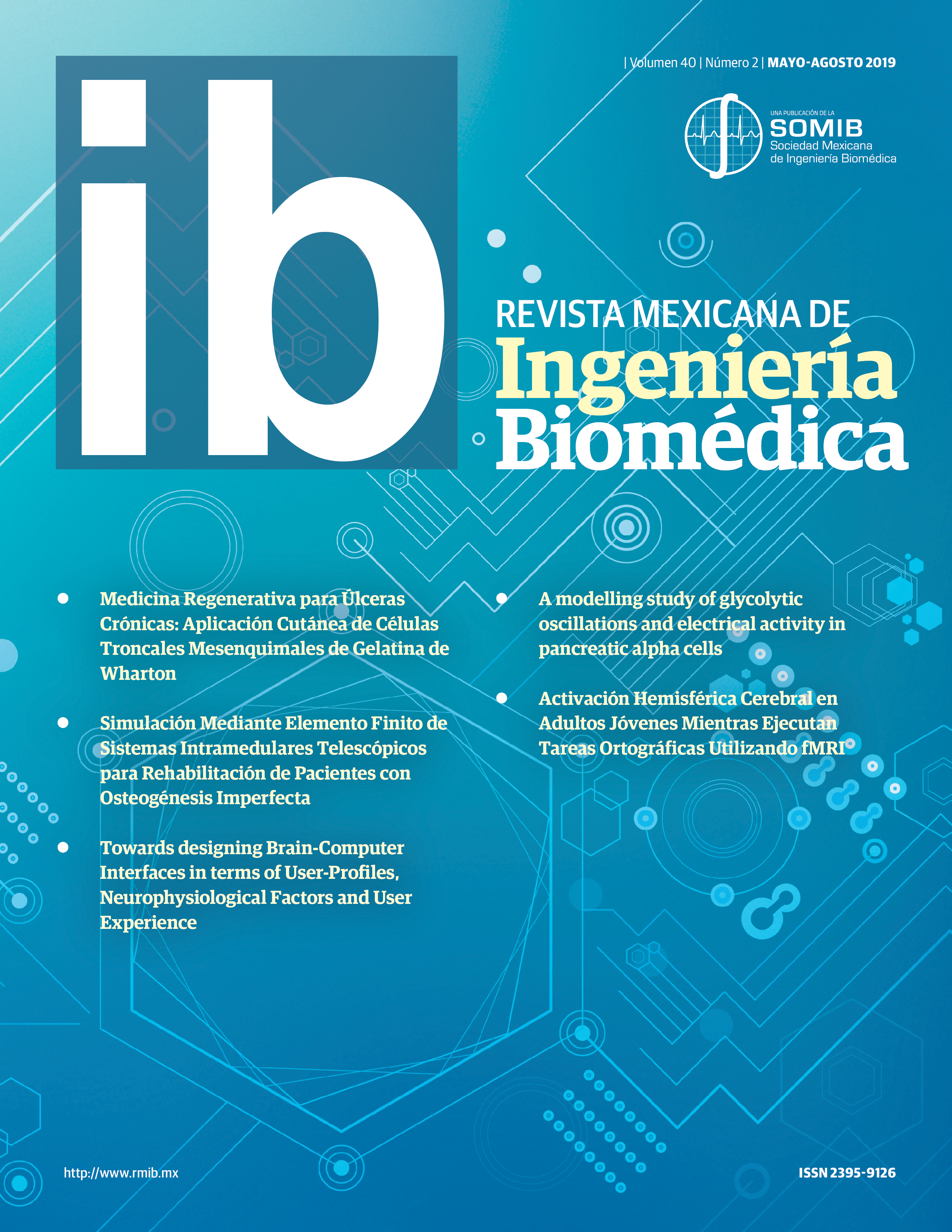Simulation by Finite Element Method of Intramedullary Telescopic Systems for Rehabilitation of Patients with Osteogenesis Imperfecta
DOI:
https://doi.org/10.17488/RMIB.40.2.2Keywords:
telescopic system, osteogenesis imperfecta, numeral analysisAbstract
In this work we propose the analysis of different geometries for an intramedullary device, which help to reduce and avoid the migration, deformation and rupture of the implant in bone tissue affected with Osteogenesis Imperfecta (OI). Designs of different prototypes were made in CAD, where the mechanical properties in the device's soul are analyzed, as well as in the distal and proximal threads of the male and female implants. Likewise, 3D bone models of an affected infant with OI were obtained to perform finite element simulations of the interaction between the bone and the intramedullary device. The results show that the prototypes proposed decrease the strain of the devi-ce, as well as the increase in the stiffnes of the bone-prosthesis relationship. Also, the threads generated less stress in the union with the bone, which provides less damage to the bone tissue. The work was limited to the numerical analysis of the redesign of intramedullary telescopic implants for patients with OI. Concluding that the semicircular geometry ¾ of cane, gives an optimal result in the tests carried out, while the ACME threads provide a better sub-jection in the distal and proximal epiphyses of the long bones.
Downloads
Downloads
Published
How to Cite
Issue
Section
License

This work is licensed under a Creative Commons Attribution-NonCommercial 4.0 International License.
Upon acceptance of an article in the RMIB, corresponding authors will be asked to fulfill and sign the copyright and the journal publishing agreement, which will allow the RMIB authorization to publish this document in any media without limitations and without any cost. Authors may reuse parts of the paper in other documents and reproduce part or all of it for their personal use as long as a bibliographic reference is made to the RMIB. However written permission of the Publisher is required for resale or distribution outside the corresponding author institution and for all other derivative works, including compilations and translations.








